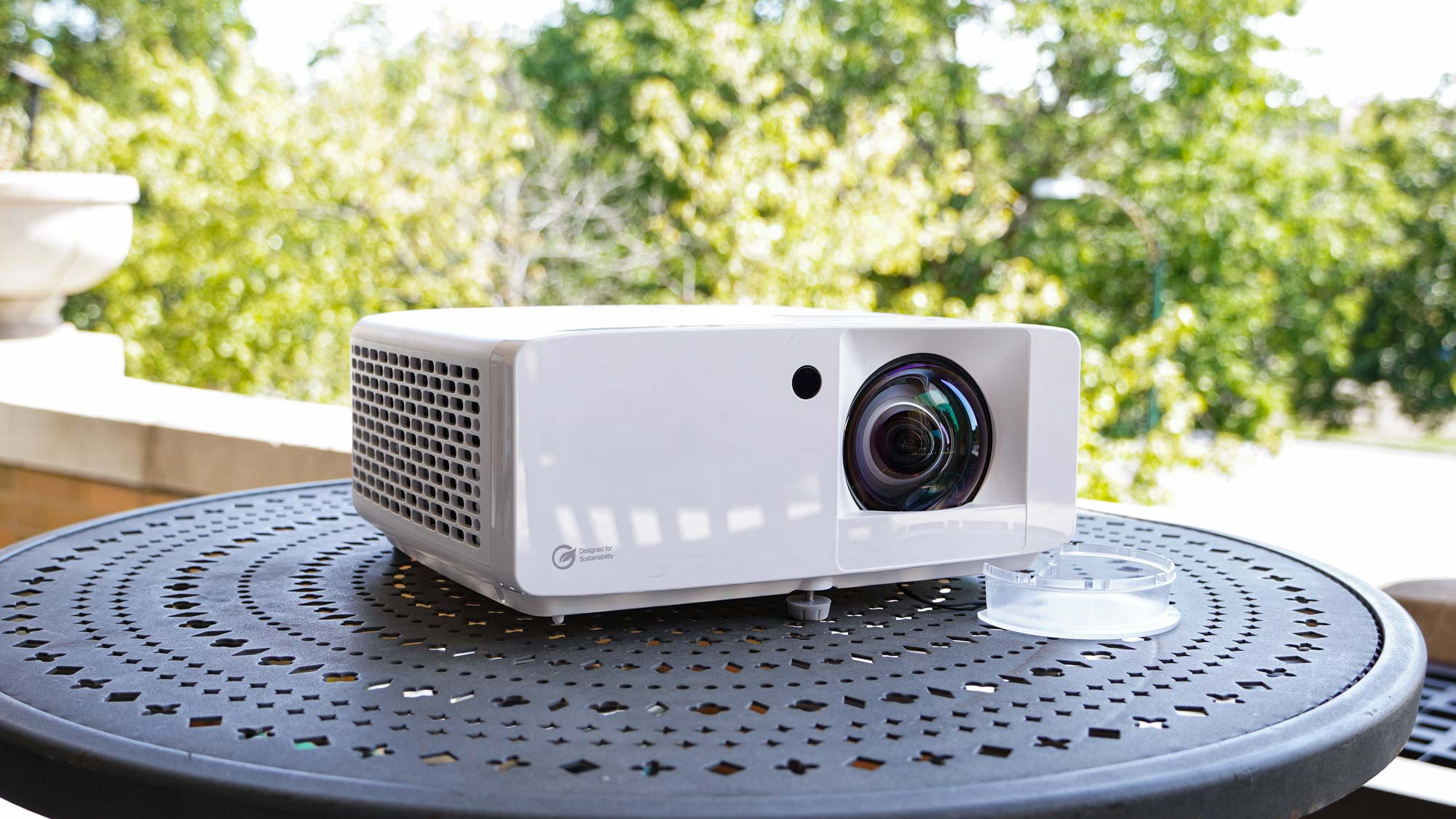
Price: $1,799
Screen size: 36-292 inches
Model: GT2100HDR
Resolution: 1,920 x 1,080
Projection: Laser Phosphor, DLP
HDR: HDR10, HLG
Refresh Rate: 120Hz
Ports: 2x HDMI 2.0, 1x USB, 1x LAN
Audio: 1x15W
Smart TV Software: n/a
Size: 10.7 x 4.5 x 8.5 inches
Weight: 6.61 lbs.
The best projectors these days are combining bright images with stunning color that you can stretch across a picture over 100 inches and enjoy with powerful audio all from a smart TV operating system built-in. The Optoma GT2100HDR eschews much of this to focus on picture alone, and it only covers a small portion of that formula.
On the bright side, it gets the brightness right delivering respectable visibility even in sunlit rooms. That pairs with a good contrast for mostly enjoyable visuals. Low latency makes it good for gaming, too. But it’s only 1080p, has a pitiful speaker, no smart TV operating system, and it has disappointing color. As you’ll see in my Optoma GT2100HDR review, this projector is missing a lot for $1,799.
Optoma GT2100HDR review: Pricing and availability
The Optoma GT2100HDR is widely available for $1,799. You can find it from Amazon, Best Buy, Adorama, and B&H. I’ve noted it on sale closer to $1,549, though, so you may be able to find it below retail price.
Optoma GT2100HDR review: Design
The Optoma GT2100HDR is the definition of bland projector design. It’s a large chunk of white plastic, covered in little pill-shaped vent holes on the sides and sides. You can see right into the projector, which isn’t necessarily a good thing when taking into account dust filtration, although this model apparently has an IP6X rating against dust ingress into key components. The top and front are mostly covered in more flat, white plastic.
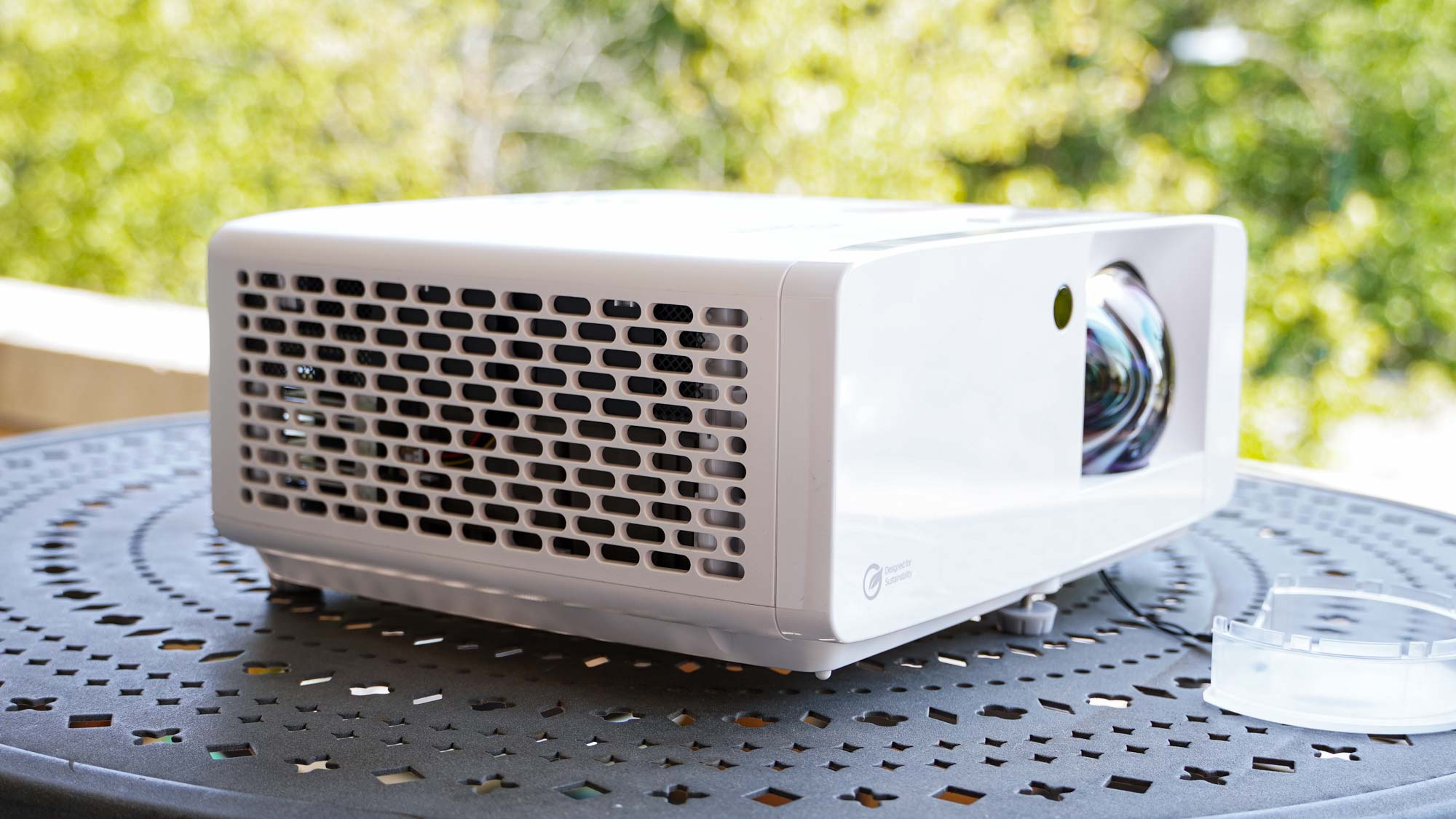
The top of the projector includes a large manual focus dial and a small array of buttons for controlling the projector and navigating menus. Next to those buttons is an ambient light sensor. The front of the projector also includes a light sensor, helping the system adjust its picture for different ambient conditions (assuming you don’t want it blasting at max brightness all the time).
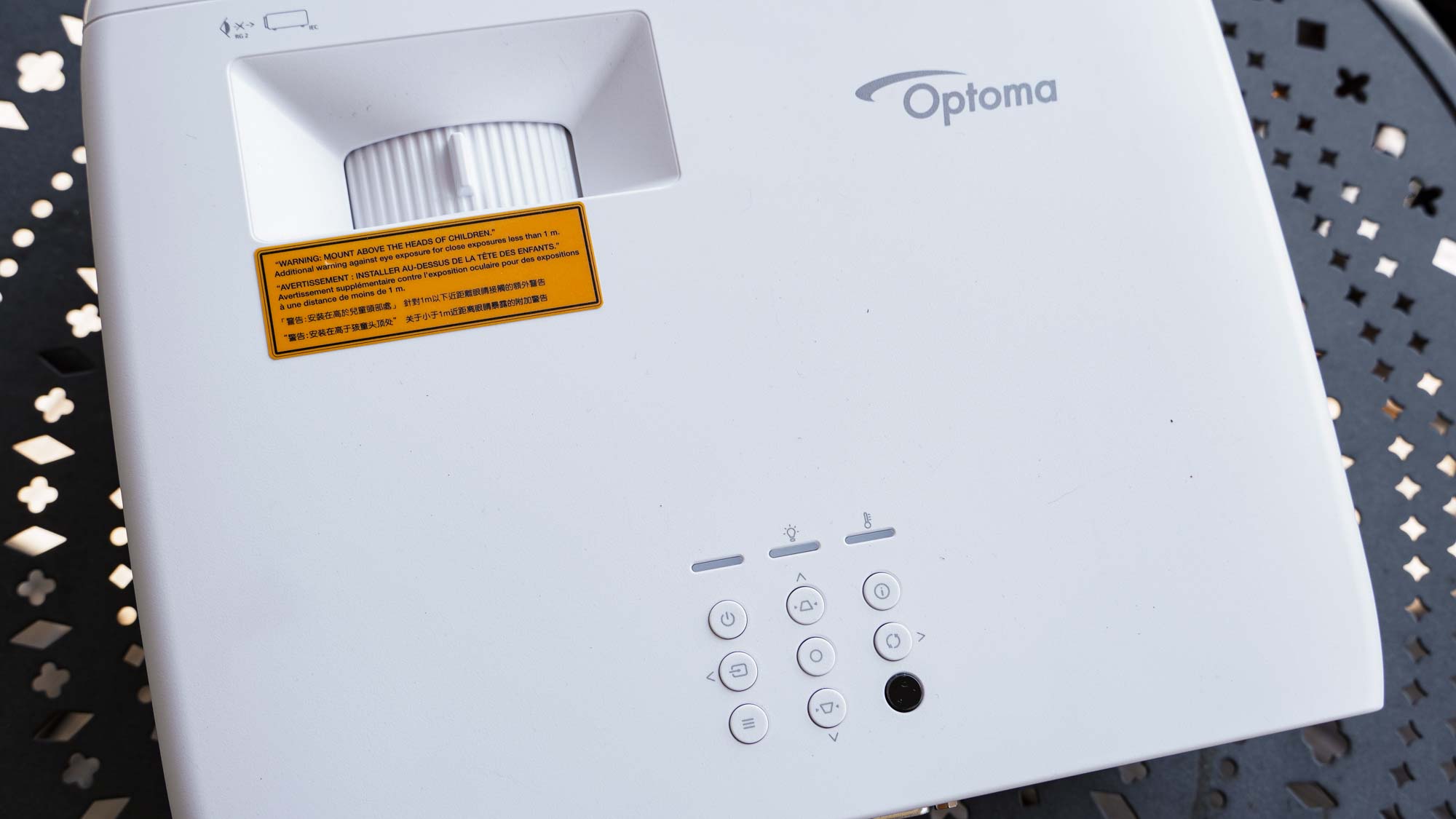
The front of the GT2100HDR is the only place there’s a little bit of excitement. Removing the included lens cover reveals a stunningly bulbous lens. As this is a short-throw projector, it has some wild curvature to shine out at a wide angle. Looking at the lens is like staring into the rainbow-colored eye of some exotic fish — though you will not want to do that when the projector is powered on.
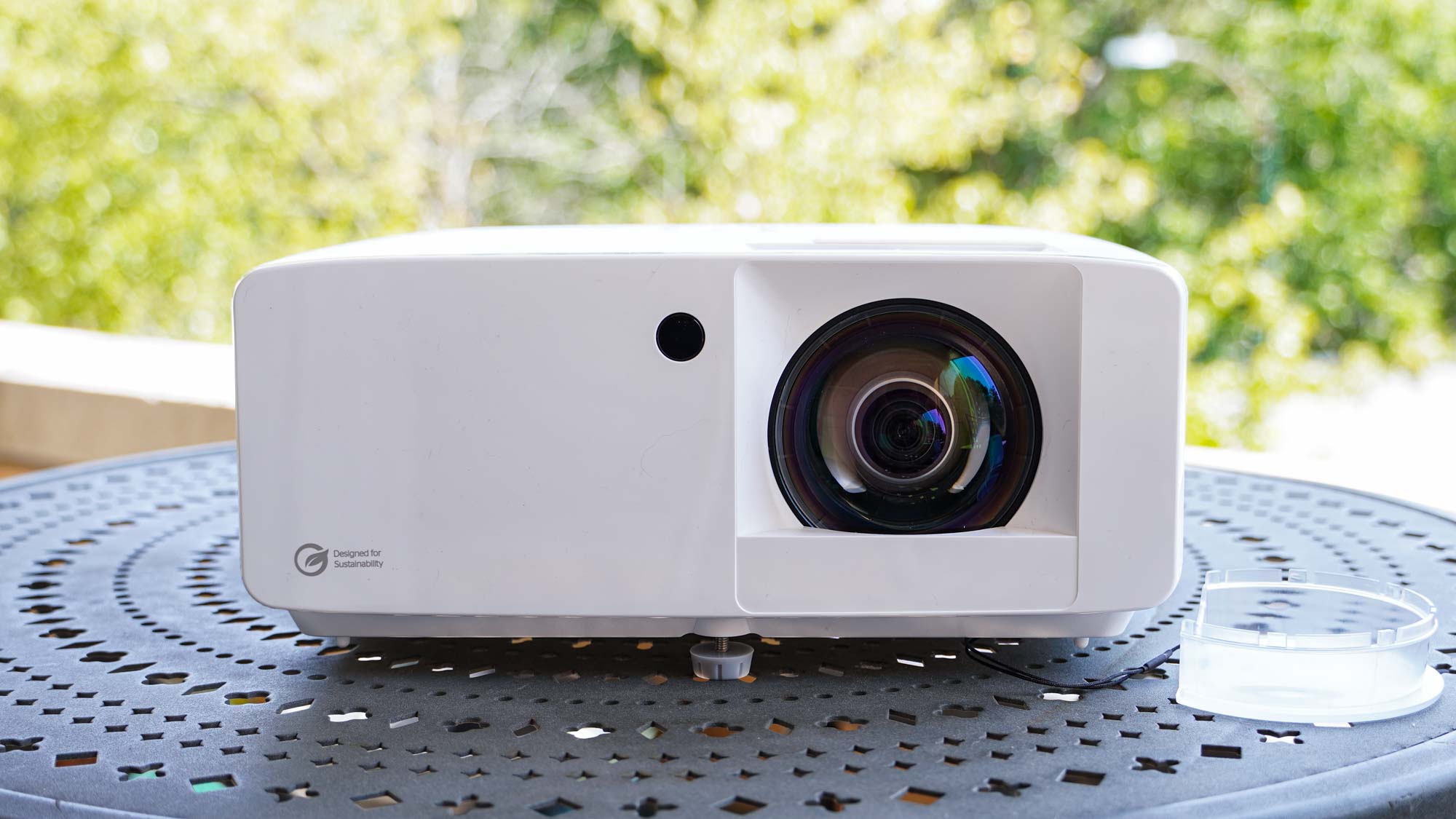
Meanwhile, the underside of the projector continues the utilitarian aspect alive. It has three height-adjustable rubber feet and multiple mounting points in case you want to attach it to the ceiling. The projector isn’t center-balanced though, so those mounting points are shifted to one side.
The rear of the GT2100HDR offers up two HDMI 2.0 ports. There’s also a USB port out (5V1.5A), a 3.5mm audio out, an RS-232 control port, and an Ethernet port. With no HDMI ARC or even optical audio output, home theater enthusiasts will want to find another way to send audio to a real speaker system, as the Optoma GT2100HDR is only packing a single 15-watt speaker.
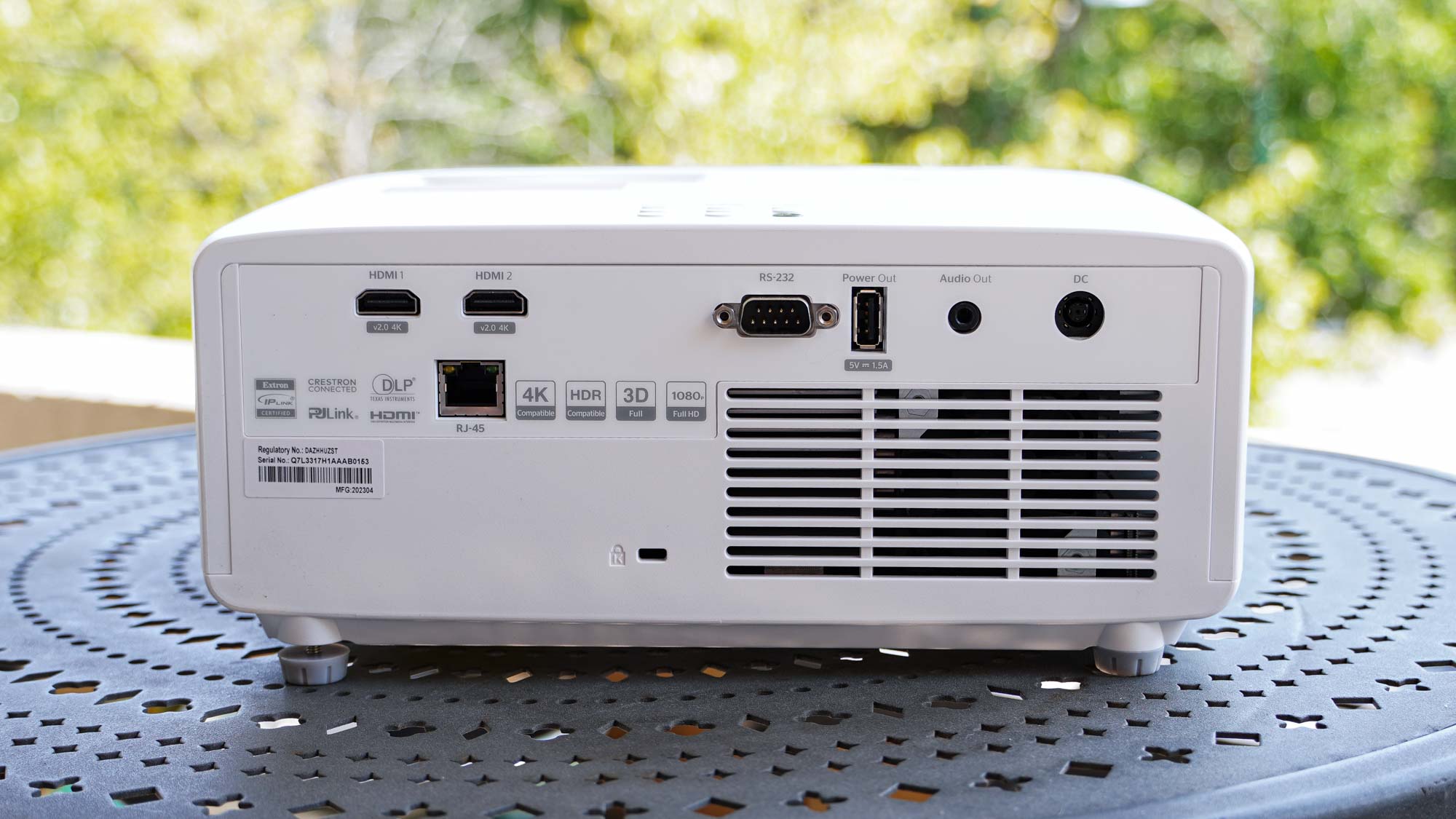
While many projectors of this style have integrated power supply, so you just end up with a simple cable running in to provide power, the Optoma GT2100HDR has fairly compact proportions and accordingly relies on an external power brick, though it’s not an obnoxiously large one.
Optoma GT2100HDR review: Performance
There’s some good to the Optoma GT2100HDR but not so much great about it. Beyond its bright picture, which depends largely on it projecting bright content, there’s no real magic. It doesn’t run into issues of oversaturated colors, but that may be because it simply doesn’t have that much color to work with. Even in its vivid color mode, it’s hardly colorful, with content looking fairly lifelike. This works well enough for a movie like Roadhouse, which consists entirely of natural visuals and plenty of bright scenes.
Watching Avatar 2 with HDR enabled, the lack of color saturation is all too clear, as there are countless blue creatures on screen that look simply too pale.
Watching the second season of Good Omens, I noted that the HDR mode was overly dark, taking away the projector’s key advantage: brightness. Even though this projector is bright enough for some daytime viewing, watching HDR content with the HDR mode enabled and dynamic range set to HDR (confusing, I know), everything was exceedingly dim. In a dark room, the HDR mode makes for a more exciting image, but it can take some tweaks to get it looking good. Notably, there’s a color space setting that can have a huge impact on contrast. Setting it to “0~255” results in a washed out image, but setting it to “16~235” sorts that out. One might think the “Dynamic Black” setting could help here, but this just introduces some distracting color shifting to the image overall that’ll occur in the middle shots.

Watching Avatar 2 with HDR enabled, the lack of color saturation is all too clear, as there are countless blue creatures on screen that look simply too pale. In the opening segment that sees human ships traveling through space and landing on Pandora, the contrast helps the visuals stand out, but the world just never quite feels fully alive because of the weak color performance.

For a show like Justified without HDR, the picture is decent. The lack of color continues to be palpable, but the contrast and brightness lend themselves nicely to the show’s dry environments and many night scenes.

Even though this is a 1080p projector, it still appears satisfyingly sharp. The resolution occasionally shows itself on simple curves and straight lines, like the text of subtitles. But I hardly ever notice the lower resolution in actual content, and there’s no issue with visible gaps between pixels. That said, the rainbow effect is noticeable from time to time, and those sensitive to it may have issues with this projector.
Optoma GT2100HDR review: Test Results
The Optoma GT2100DHR is a knock-out in the brightness department. With an all-white image displayed, I took the lux readings at 9 points across the display and multiplied this by the projector image size. This saw the GT2100HDR achieving a monstrous 3,012 ANSI lumens. That’s great news if you’re looking for a daytime-ready projector, as that’s plenty for viewing even in brighter rooms. The bright mode that achieves this is overly green. The Vivid mode is still satisfyingly bright but much more naturally colored.
The contrast holds up as well. After taking the all-white lux readings, I follow up with a quick all-black reading to get a rough estimate of contrast. The GT2100HDR scored a 2370:1 contrast ratio in this test, which is more than satisfactory considering the common IPS display sits at closer to 1,000:1.
The brightest projectors don’t always come with the best color performance, though, and that’s the case here. The laser phosphor light source of the GT2100HDR just doesn’t reach out far enough for a wide color gamut. With color gamut measured by a SpyderX Elite colorimeter reading off a 1.1-gain projection screen in DataColor’s software, the GT2100HDR achieves only 90% of the sRGB colorspace and 74% of the DCI-P3 color space. This is rather meager performance that even cheap displays can outdo. Much cheaper projectors also outdo it in this department, like the $1,000 BenQ HT2060, but it doesn’t come close to the level of brightness.
Optoma GT2100HDR review: Audio
There may be a 15-watt speaker tucked away inside the Optoma GT2100HDR, but its power doesn’t indicate quality. At any volume above 20%, it’s grating, and sounds a bit like the speaker inside of a plastic box that it is. For very casual viewing, it at least provides some audio, enough for a couple people sitting in a quiet room to hear, but not to enjoy.
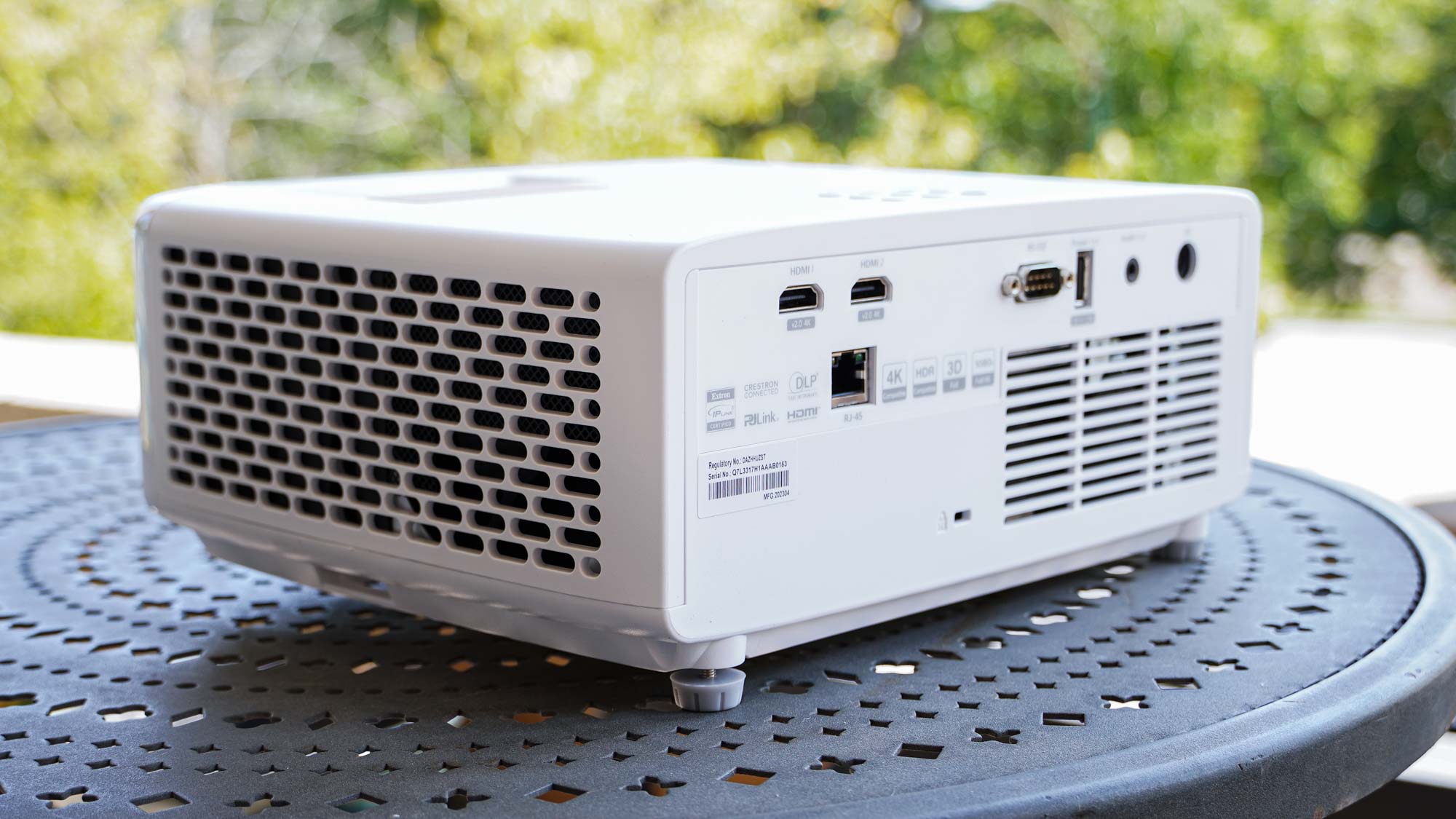
The trouble begins when you want to enjoy audio from another source. I used the projector with a Chromecast with Google TV. For a little viewing party of Roadhouse, I wasn’t going to subject my guests to the internal speaker. Bluetooth connectivity to a soundbar might have been sufficient and plenty convenient, but there was too much latency, and the projector offers no audio syncing techniques. So naturally I should have turned to ARC, eARC, or at least optical for a quality audio signal out to the speaker system, right? No dice. There’s only a 3.5mm jack. This means you’ll be stuck with more basic audio unless you’ve got an AV receiver or another way to pass audio along from the source and only send video to the projector.
Optoma GT2100HDR review: Gaming
Defying all expectations, the Optoma GT2100HDR proves a much more impressive projector when it comes to gaming. No matter how I fussed with picture settings, I could not get the HDR performance looking great for general viewing, especially when it came to color. But hooked up to a PS5 to play through some of Horizon: Forbidden West, the HDR picture only took a few tweaks to get looking quite impressive (Switching the “Color Space” setting to YUV was necessary). In fact, the color even popped, with the many blue accessories worn by characters popping more than any Na’Vi in Avatar 2.

It’s not just the picture that holds up well while gaming. This projector has a 120Hz refresh rate, giving it extra smooth visuals as well as an extra low latency. Running timecode on the 90Hz OLED of my laptop and mirroring it to the projector, I measured just 26ms of latency in the attractive Vivid picture mode. Setting it to the Gaming mode shaved 1ms off that to bring it down to 25ms of measured latency. While playing, I don’t notice a hint of that latency, and Horizon: Forbidden West isn’t even running at 120fps, so hooking the projector up with a gaming PC or other video source putting out a full 120fps will result in even lower perceived latency.
Optoma GT2100HDR review: Smart TV Interface
This projector is primarily a display. It has no baked-in smart TV interface, so you’ll be looking at setting it up with a streaming device of your own. The menus it does have are as utilitarian as they come. You can adjust a great many settings of the projector through them with plenty of ways to adjust the picture, including an in-depth color management system. This means you won’t be getting some of the smart setup features other projectors are offering these days, like auto-focus and auto-keystone adjustments. But you can easily adjust focus manually and tediously adjust keystone digitally in the settings.
One advantage to this setup is that the projector will never be bogged down by aging streaming hardware. With many projectors offering fairly slow operating systems from the get-go, you’ll be forced to deal with them as they age even if you intend to almost exclusively use an external streaming device. By extension, this means accessing the projector’s settings doesn’t rely on the same computing muscle powering the streaming service, so the menus and controls are always quickly accessible. Changing many picture settings are applied quickly, so you can see the adjustments you make as you make them, except when switching HDR on and off, which reboots the display.
Optoma GT2100HDR review: Remote control
Given the Optoma GT2100HDR isn’t running much of an operating system, you shouldn’t expect much of a remote. But the remote control Optoma includes is laughably awful for a product that’s closer to $2,000 than it is to $1,000. Even at $1,000, the remote would feel bad. If you’ve ever bought a cheap LED string light, you’ll know just what kind of remote experience you’re in for.
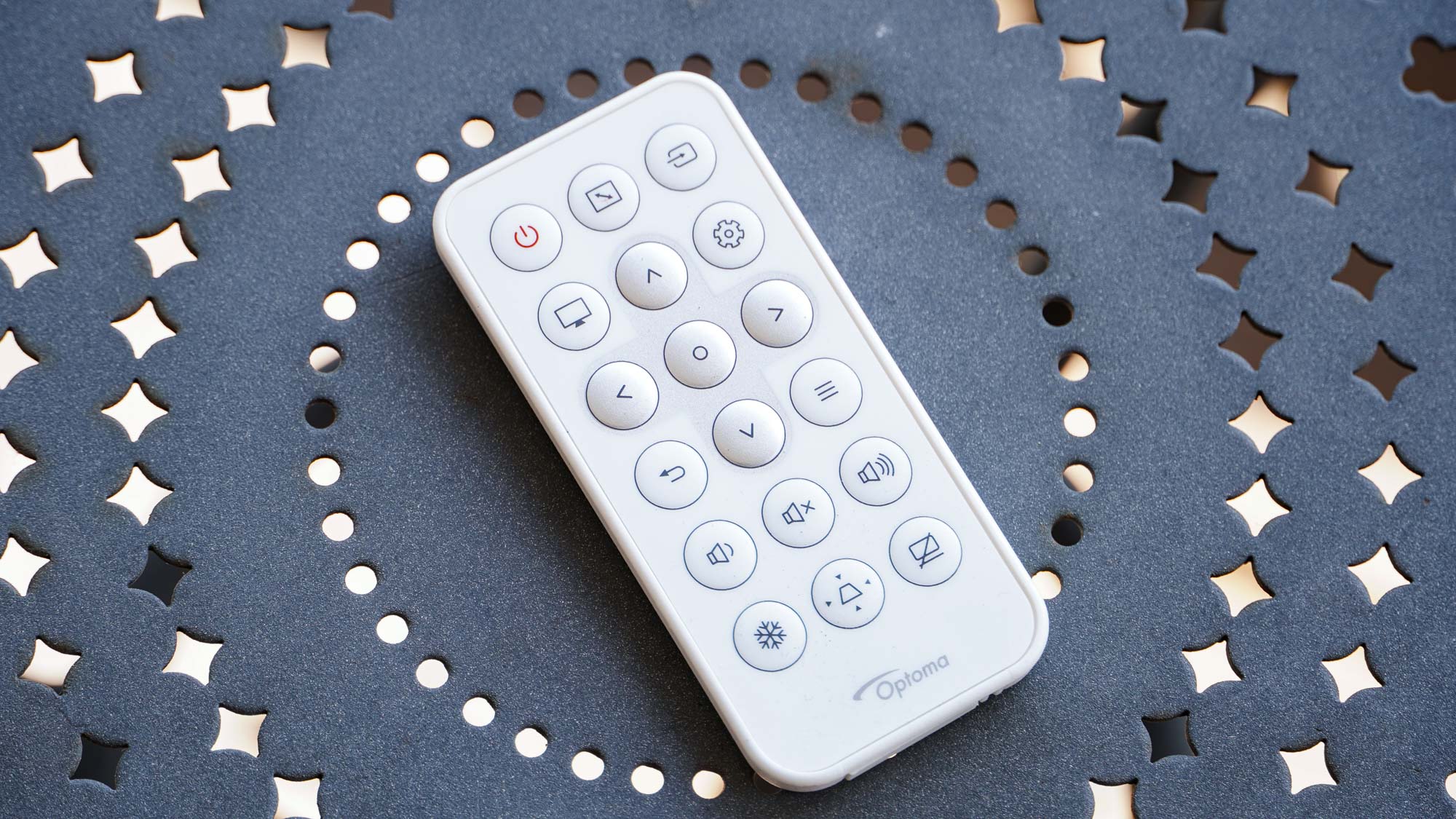
The remote is a flat little slab, barely thicker than two quarters stacked up. It has a smattering of 18 small buttons that have no distinct feel to help you navigate them by touch. This is effectively a remote you’re meant to use once when you’re first setting the projector up and then hide away forever (or until you move the projector and set it up somewhere new). Unfortunately, I found I needed to adjust picture settings fairly often, and thus was forced to pull the awful remote back out. Bad buttons and line-of-sight make for an awful time.
Optoma GT2100HDR review: Verdict
The Optoma GT2100HDR isn’t a gorgeous projector, both in terms of its physical design and the picture it projects. But it delivers an impressively bright image with decent contrast, and that counts for a lot, especially if you like to do a lot of watching during the daytime. Pair that with a low latency and 120Hz refresh rate, and it’s definitely a respectable option for gaming. With such paltry color, poor audio performance, and few audio output options, it could be fussy to get set up. And the short throw may compound that trickiness unless you’re ready to go with a ceiling mount or can shift your media center all to a coffee table.
Simply put, it’s just a bit too fussy to feel like a great option for the price.







